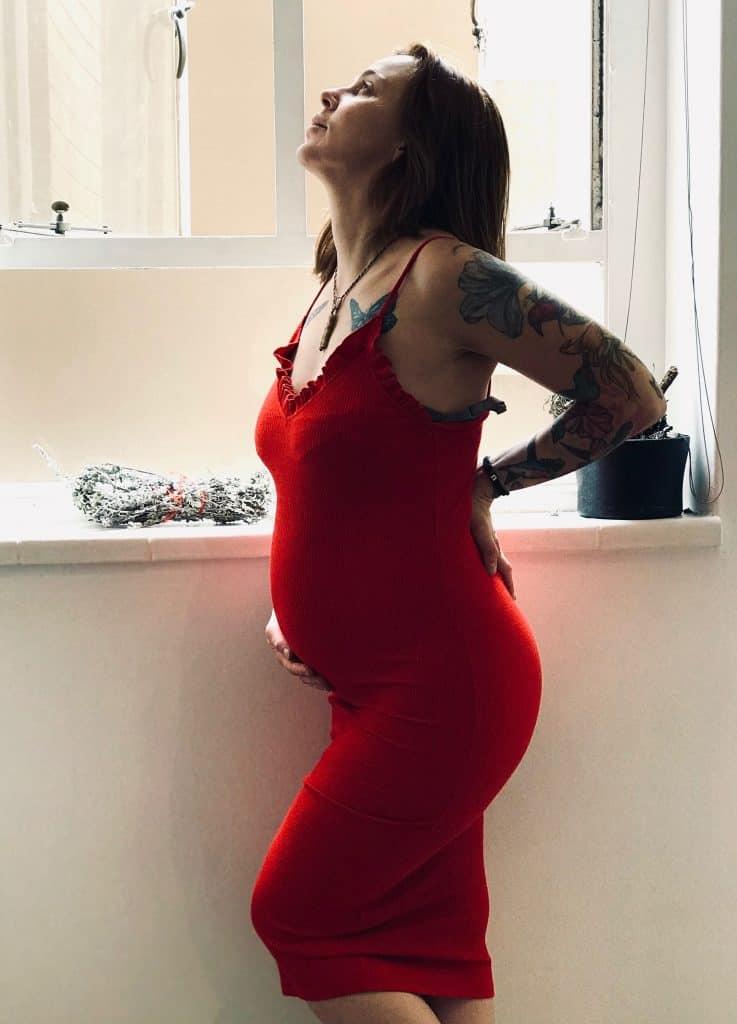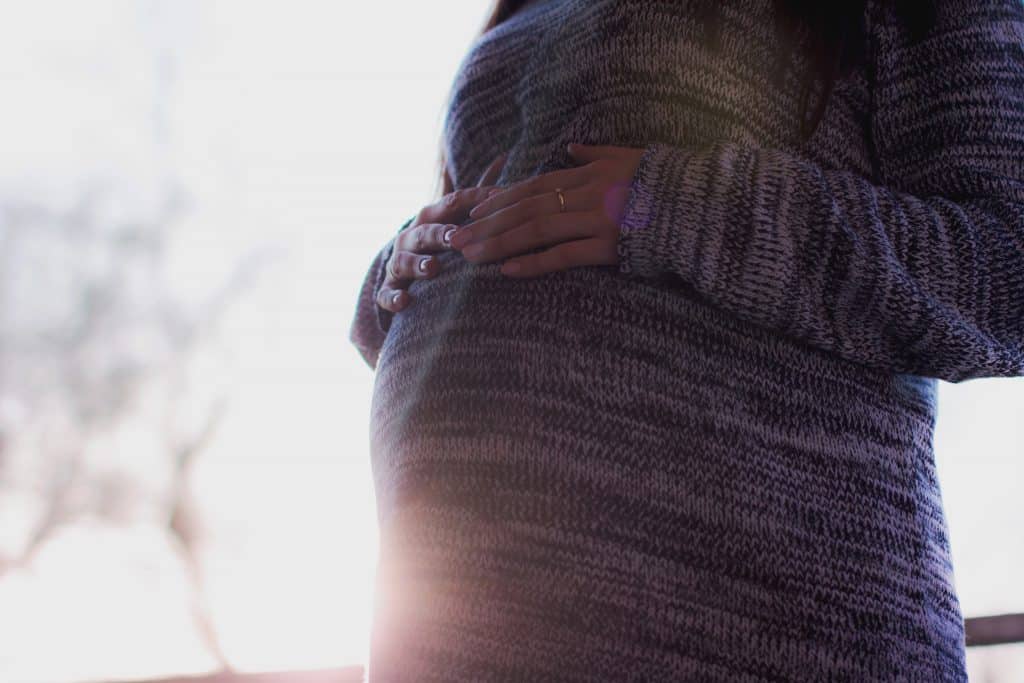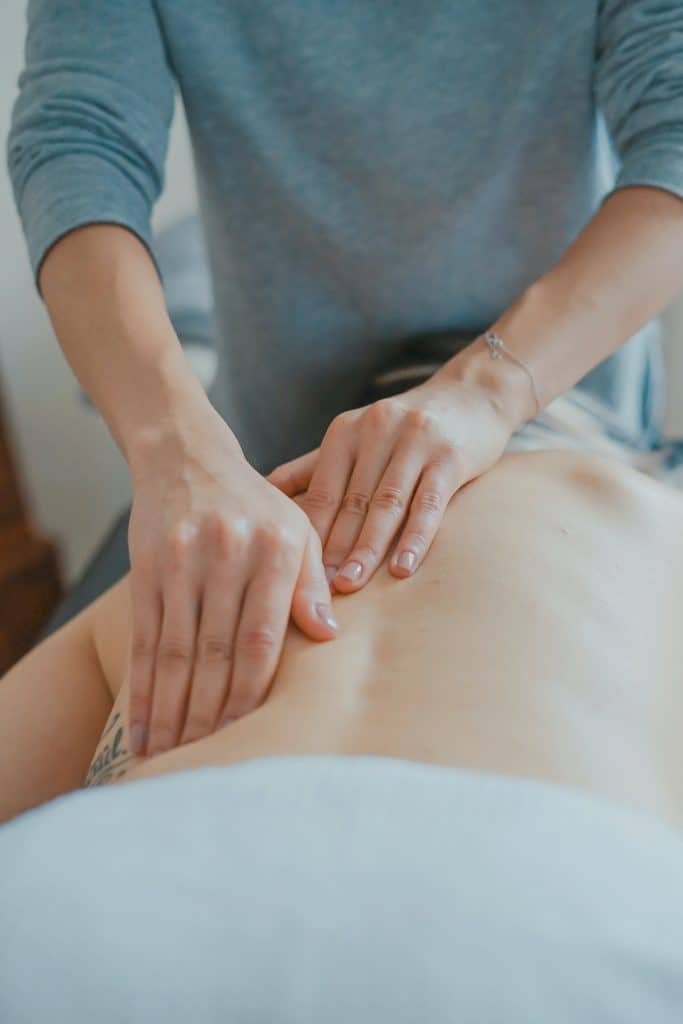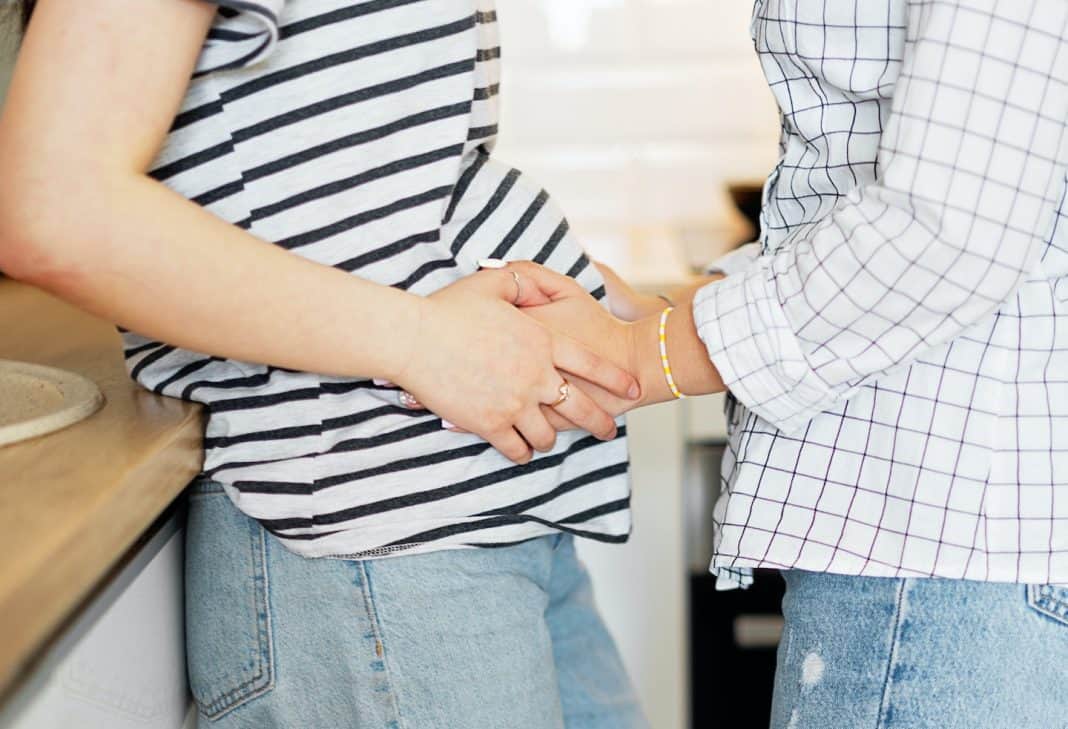There are so many aches and pains during pregnancy, it’s sometimes hard to tell what’s what. Will it affect the baby? Is this just run-of-the-mill pain, or is it something serious? Am I in labor?!
Almost all hip pain during pregnancy (and back pain at that) is simply a symptom of your changing body, not something that will stick around once the baby is out. (You might have hip and/or back pain then, too, but that will have more to do with the birth and/or carrying around an infant than pregnancy.)
That said, there comes a point when enough is enough. “It is always important to check in with a doctor or midwife if you are experiencing intensified pain that stops you in your tracks and/or becomes worse or doesn’t let up,” says former dancer and veteran prenatal massage therapist, Ellen Giglio, who is based in New York City. “Typical pregnancy symptoms tend to come and go with the hormonal and structural changes, but severe pain or discomfort that doesn’t let up could be a red flag.”

Why Do I Have Hip Pain During Pregnancy?
You’re growing a baby! This is all, unfortunately, totally normal. In fact, about 60 percent of women report lumbopelvic pain (that is, low back and hip pain) during pregnancy, so you’re in good—though pained—company.
The combination of surging hormones and growing a person inside you can be really challenging on the body, especially the lumbopelvic region, causing that dreaded hip pain during pregnancy.
“The influx of pregnancy hormones naturally loosens soft tissue structures, especially ligaments and tendons,” explains Giglio. The connective tissue has to soften in order to make room for the baby to grow and then exit, but it also changes your own structural alignment—in other words, your bones and vertebrae need to shift around, which can be really uncomfortable.
“This has a huge effect on the structural alignment, and can weaken the muscles,” Giglio says. There’s also the simple fact of gaining weight in a relatively short span of time. This alone can put a lot of pressure on your joints. Combining all of these factors results in hip pain during pregnancy, plus a few more aches and pains you likely hadn’t anticipated, like…

Round Ligament Pain
What are these sharp pains? Am I in labor? Probably not, so don’t panic. Don’t confuse sharp, jabbing pains in your lower abdomen with normal hip pain during pregnancy. These are most likely round ligament pain.
According to the Mayo Clinic, “The round ligaments are a pair of cord-like structures in the pelvis that help support the uterus by connecting the front of the uterus to the groin region.” As the baby grows in utero and the uterus expands, these ligaments also get stretched out and pulled on, causing some strain. The pain often occurs when the ligaments are in spasm or the nearby nerve feels irritated.
“Pregnant women say they feel it when they are on their feet for too long, or when they are getting up from sitting, or when sneezing or coughing,” says Giglio. “Sometimes women feel it when they are exercising or making a sudden movement; others say they feel it any time of the day, mostly when they’re in motion, not typically while lying still.”

How can I alleviate round ligament pain?
Pay attention to when you are feeling round ligament pain the most, Giglio advises. Is it when you get up from sitting? When exercising? When sneezing? Figuring out when you tend to get the pain—becoming aware of the patterns—can help keep it from happening too often. Here is some concrete advice to avoid this specific type of hip pain during pregnancy:
- Stand up slowly. Wait for the muscles and ligaments to settle into a standing position before moving or walking.
- Sit down or flex the hips just before sneezing or coughing.
- Use warm compresses and take warm baths.
- Prioritize strength and flexibility. Keeping your core strong and both legs strong and flexible can help to ease the pain.
- Get a massage.
- Tylenol might help, but always consult your doctor before taking any medication.
Here’s the thing with round ligament pain, though: As long as the baby keeps growing, those sharp pains are likely to come and go as the stretching of the uterus, surrounding muscles, tendons, and the round ligament continue to stretch. If this pain becomes severe and does not let up, always get it checked for those rare cases of appendicitis or preterm labor.

Sciatic Pain
I’m feeling pain in my back and pain down my leg. What’s happening? That hot nerve pain you feel down your leg when you sit, bend, or stand around for a while? That’s the dreaded sciatic pain. Although sciatica can be caused by several things—most commonly a herniated disk, spondylolisthesis, or stenosis—in pregnant women, it’s likely because of the spinal alignment shifting around and added pressure on the pelvis, Giglio explains.
Sciatica, a specific type of hip pain during pregnancy, usually shows up somewhere in the second and/or third trimester when the soft tissue structures become more affected and the spinal alignment continues to shift around.
“What I typically see in pregnant women is the change in their stature and alignment as the baby grows in the uterus,” she says. “As the weight of the baby/uterus/placenta continues to stretch the uterus, abdominal muscles, and ligaments, the low back tends to arch more and more, causing a sway back. This puts the vertebrae in a completely different position, constricting lumbar muscles.”
This can also put more pressure on the sacroiliac joint, also known as the SI joint. This joint connects the sacrum to the ilium and allows for movement in the low back and hips.
Trying to locate the spot? You can palpate it right where there’s a little divet on either side of your bony sacrum, right above your butt—probably right where it hurts! Pregnancy can pull on the SI joint, hamstrings, gluteal muscles, deep lateral rotators, and hip stabilizers, causing a world of hurt.

How can I alleviate sciatica during pregnancy?
Try to remind yourself, first of all, that your sciatica won’t last. Unless you have a serious medical condition, like a herniated disc, once the baby is out of you, sciatic pain will go away. So as uncomfortable as you are, it will soon shift. In the meantime:
- Exercise. Swimming is especially good for back and sciatic pain because you are weightless.
- Invest in regular massage therapy to help to release tightening muscles.
- Take warm baths to help circulation to the muscles and with sciatica (but don’t make them too hot!).
- Use ice.
- Find the right position while at rest. This gives all the bony and soft tissue structures a chance to be in a neutral and relaxed position.
- Use a lumbar support or regular pillows against the low back when sitting. This can calm aches in the low back, thus causing less strain on the sacrum, hip joints, and muscular structures.
- Wear comfortable, supportive shoes with some cushion. This lessens the compression of the joints due to the extra weight on the body and the shifting alignment issues.

How To Avoid Hip Pain During Pregnancy
- Don’t get stuck in any one position for too long, especially sitting or standing still. (This is true whether you’re pregnant or not!) “As my wise acupuncturist used to say, ‘too much of anything is no good!’” says Giglio. So moderation is important.
- Stay hydrated—more than usual. This is key for muscles, joint structures, blood volume, circulation, the production of amniotic fluid, and even the production of breast milk. “When you’re pregnant, your body makes about an extra quart of blood for the baby,” explains Giglio, “and that’s extra fluid that the body has to work to pump around.”
- Exercise. Seriously. Look, we know all you want to do is nap sometimes. But it’s very important to keep your legs and core strong during pregnancy—those can also help during labor and delivery. Prenatal yoga, daily walking, gentle Pilates, swimming, regular stretching, or dancing can keep you moving, strengthen your core and legs, and can help alleviate some of the aches and pains from many of these musculoskeletal changes and symptoms.
We know it’s no fun to be in pain, and hearing It’s all worth it! rarely helps. But most of your back and hip pain during pregnancy is just that: during pregnancy. So follow our advice (and moan to your partner and girlfriends all you like), and know that soon you’ll have a gorgeous babe in your arms—and not in your body.



